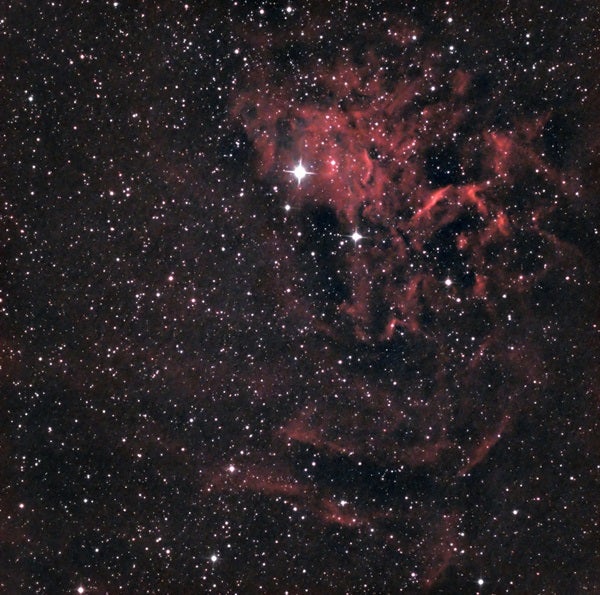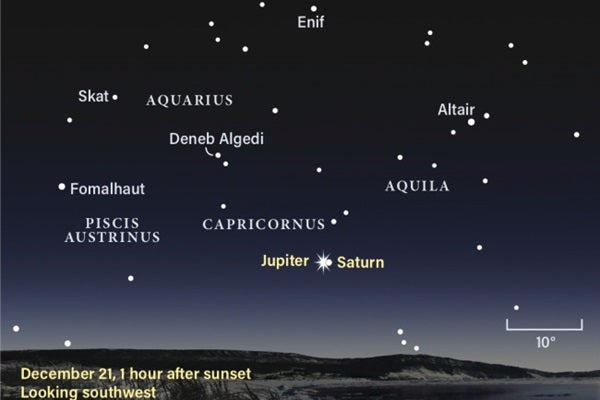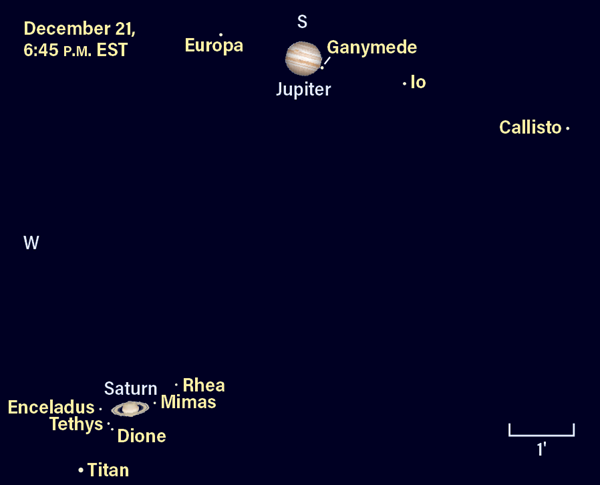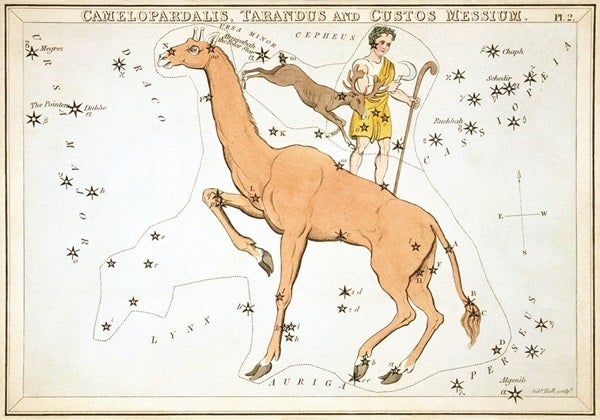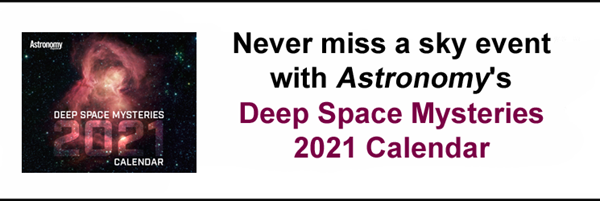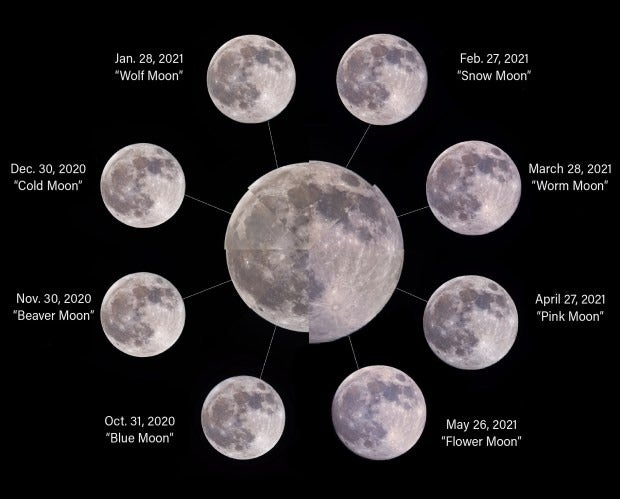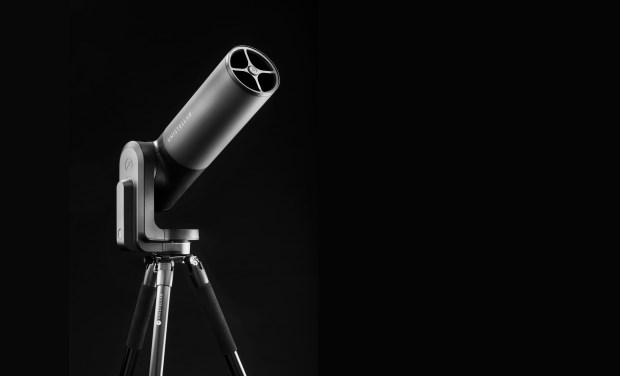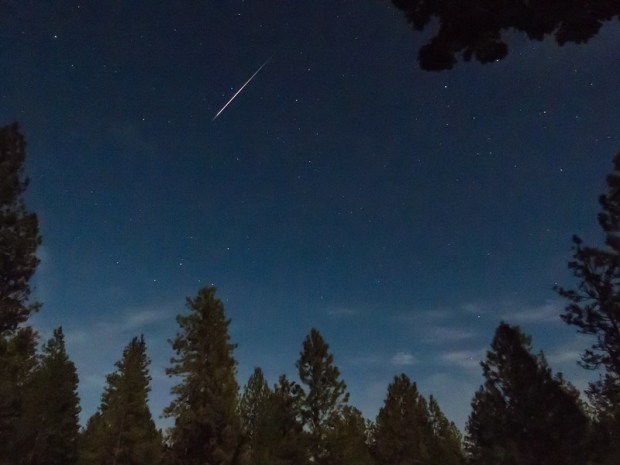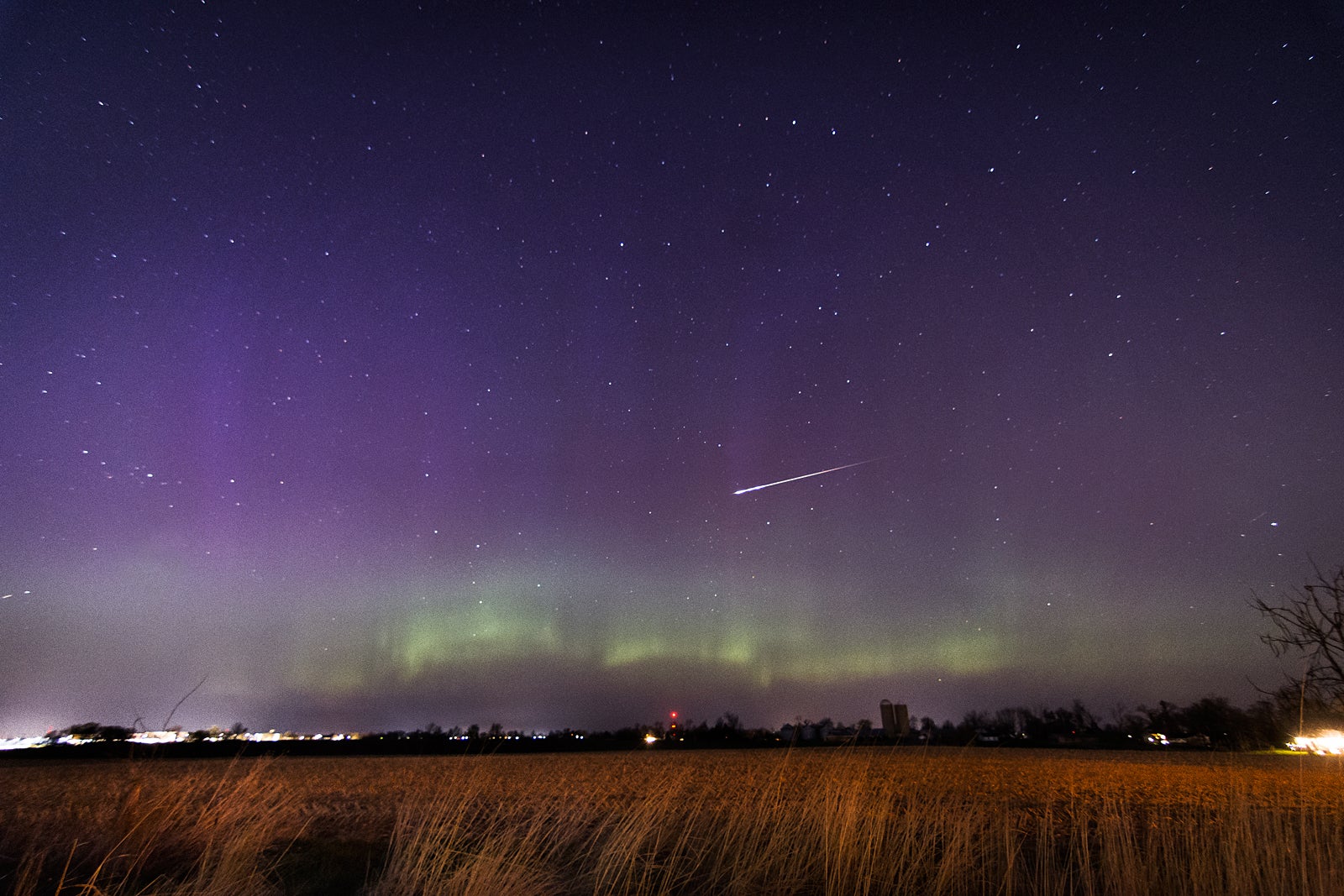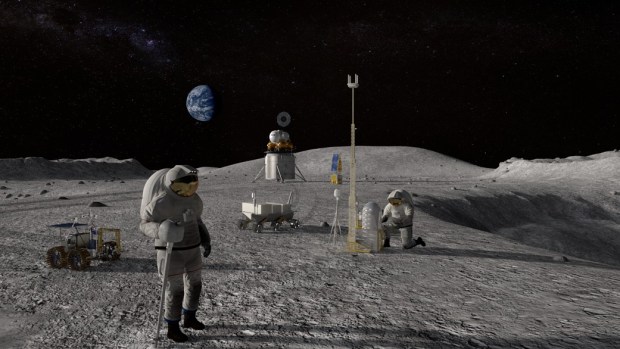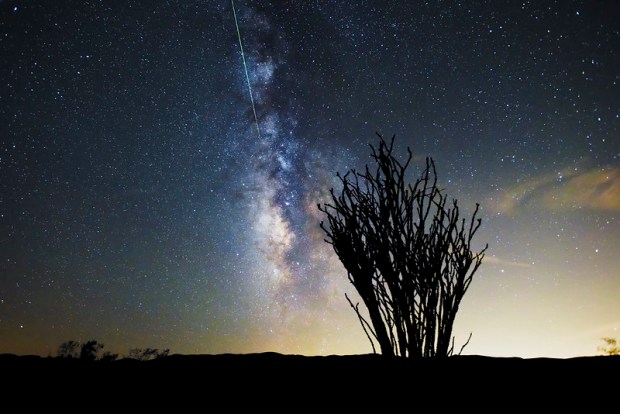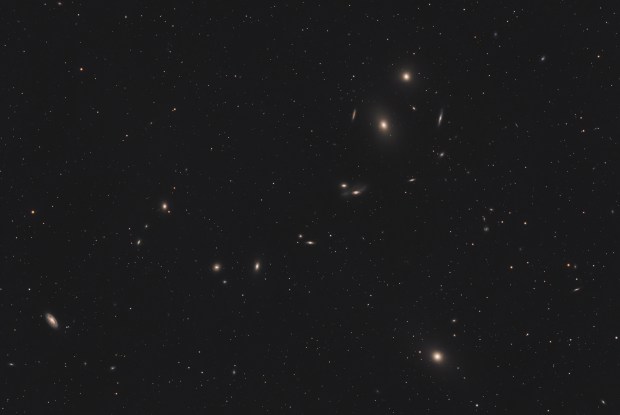With snow now on the ground in many parts of the U.S., it’s now time to welcome the winter constellations back into the sky. By two hours after sunset, Taurus, Orion, and Gemini have all cleared the eastern horizon, moving higher as the night wears on. These familiar, bright constellations hold a treasure trove of deep-sky objects, all easily visible tonight with no Moon in the sky after about 9 P.M. local time. The easiest two to spot are the Pleiades (M45) just above the V of Taurus and the Orion Nebula (M42), which appears to hang below Orion’s belt to form his glowing sword.
Both are visible under good conditions with the naked eye, while binoculars or any size telescope will bring out a plethora of detail. M42 is a young, dusty star-forming region that has already birthed several massive stars. Their light is so energetic that it is slamming into and shaping the dust around them. By contrast, M45 is slightly older — its stars have by now blown away much of their nascent gas and dust, but larger instruments or longer photographic exposures may reveal some of the dim nebulosity that remains.
Sunrise*: 7:17 A.M.
Sunset: 4:37 P.M.
Moonrise: 10:51 A.M.
Moonset: 8:59 P.M.
Moon Phase: Waxing crescent (20%)
*Times for sunrise, sunset, moonrise, and moonset are given in local time from 40° N 90° W. The Moon’s illumination is given at 12 P.M. local time from the same location.
After reaching aphelion (the farthest point from the Sun in its orbit) last week on December 16, Mercury reaches superior conjunction tonight at 10 P.M. EST. This means it is on the opposite side of the Sun from Earth, which puts it out of view of skywatchers for the rest of the year. It will reappear in the evening sky next month.
With the Moon setting two hours before midnight and not rising again until nearly noon, the late-night and early-morning hours are the ideal time for deep-sky observers. By the time the Moon sets, Auriga is high in the northern sky. Its brightest star, Capella, is hard to miss at magnitude 0.1. Given its location along the dusty disk of the Milky Way, this constellation is rich with young open clusters of stars visible with only minor optical aid. Among the brightest are M36, M37, and M38, as well as NGC 2281, NGC 1857, NGC 1893, NGC 1664, NGC 1778, and NGC 1907.
Those with more observing experience, larger telescopes, and photographic equipment may want to aim for the Flaming Star Nebula, also known as IC 405 — an emission/reflection nebula lit by the nearby star AE Aurigae. You’ll find it just over 4° northeast of magnitude 2.7 Iota (ι) Aurigae. The star AE Aurigae itself is odd — it’s a blue-hot O-type star that varies irregularly between magnitude 5.8 and 6.1. It’s also moving extremely fast compared to other stars in its vicinity, which has led astronomers to think it may have once belonged to a binary system and was long ago kicked out, lending it its great speed.
Sunrise: 7:18 A.M.
Sunset: 4:37 P.M.
Moonrise: 11:24 A.M.
Moonset: 10:04 P.M.
Moon Phase: Waxing crescent (29%)
Sunday, December 20
The farthest planet from the Sun, ice giant Neptune, is slowly making its way through the constellation Aquarius. At 3 P.M. this afternoon, the Moon passes 5° south of Neptune; by an hour after sunset, they’re nearly 5° apart and our waxing satellite is distinctly southeast of the planet. Neptune, a dim magnitude 7.9, requires binoculars or a scope to make out. Its 2″-wide disk sits less than 1° northeast of 4th-magnitude Phi (φ) Aquarii.
Just one constellation to the southwest is Capricornus, where things are really ramping up for tomorrow’s Great Conjunction between Jupiter and Saturn. The two gas giants are now less than 1′ apart, with several of their moons on display. Shortly after sunset, Ganymede and Callisto stretch out to Jupiter’s east, while Io and Europa sit to the planet’s west. Over at the ringed planet, Saturn’s largest moon, Titan, is nearly 2′ northwest of the disk, while a gaggle of smaller, dimmer moons cluster closer to the rings.
Sunrise: 7:18 A.M.
Sunset: 4:38 P.M.
Moonrise: 11:52 A.M.
Moonset: 11:06 P.M.
Moon Phase: Waxing crescent (38%)
Today is a busy day, astronomically speaking! First up, the winter solstice occurs at 5:02 A.M. EST. On this day, Earth’s North Pole is tilted maximally away from the Sun. It’s the shortest day of the year and typically marks the official beginning of winter.
Next, Jupiter passes 0.1° south of Saturn at 9 A.M. EST — that’s one-fifth the diameter of the Full Moon. However, the pair won’t be visible until twilight, when they’ll pop out of the growing darkness low in the southwestern sky. Jupiter is a bright magnitude –2 and Saturn is a dimmer magnitude 0.6. If your southwestern skies are clear at sunset, it’s more than worth getting bundled up to see the sight. But be quick — the planets are so low that they’ll set a little more than two hours after the Sun.
The last time Jupiter and Saturn sat this close together in a dark sky (meaning relatively far from the Sun) was 1226 A.D., although many other, farther-apart conjunctions have occurred. Of course, they aren’t truly close together — Jupiter is 551 million miles from Earth, while Saturn sits nearly twice as far away, at 1 billion miles from Earth. At those distances, Jupiter appears 33″ across; Saturn’s disk spans 15″, but its rings stretch 35″ from one end to the other.
And if your skies aren’t clear or you don’t have a good viewing location, Lowell Observatory has got you covered. They’re livestreaming the event, starting at 7 P.M. EST on the 21st.
Finally, rounding out our busy day, First Quarter Moon occurs at 6:41 P.M. EST.
Sunrise: 7:19 A.M.
Sunset: 4:38 P.M.
Moonrise: 12:17 P.M.
Moonset: —
Moon Phase: Waxing crescent (48%)
Tuesday, December 22
Venus passes 6° north of Antares, the red heart of Scorpius the Scorpion, at 8 P.M. EST. However, the planet is currently only visible in the morning. This morning before sunrise, you’ll find it roughly 6° north-northwest of the star.
Antares is a bright red giant glowing at magnitude 1. Venus — now only a little dimmer than magnitude –4 — far outshines it. Through a telescope, the planet appears 93 percent illuminated and 11″ across. The pair will continue rising as dawn brightens the sky; see how long you can follow them into the morning sky, but take care as sunrise approaches.
The Ursid meteor shower, whose activity runs from December 17 to 26 this year, peaks early this morning. These meteors, which come from debris left by Comet 8P/Tuttle, are only visible in the Northern Hemisphere, appearing to originate just above the cup of the Little Dipper in Ursa Minor. This year, astronomers estimate the peak rate at roughly 10 meteors per hour — not particularly high, but if you’re already planning to get up early and observe Venus, why not spend a little time scanning the skies for the odd bright Ursid meteor as well?
Sunrise: 7:19 A.M.
Sunset: 4:39 P.M.
Moonrise: 12:40 P.M.
Moonset: 12:05 A.M.
Moon Phase: Waxing gibbous (57%)
Wednesday, December 23
The Moon passes 6° south of Mars at 2 P.M. EST. By an hour after sunset, the pair is relatively high in the southeast, floating with the stars in Pisces the Fish. Ruddy Mars is now magnitude –0.5, bright enough to easily spot even with the Moon so nearby.
A far cry from its appearance during its October opposition, Mars is now just 11″ wide — the same apparent size as Venus. It will continue to shrink another 0.5″ before the month is out. The planet is now roughly 90 percent lit. If you have a decent-sized telescope, Syrtis Major and the Hellas basin will appear central on the disk around 10 P.M. EST this week.
Uranus is located in the nearby constellation of Aries. We’ll return here tomorrow evening, when the Moon passes within just a few degrees of the ice giant.
Sunrise: 7:20 A.M.
Sunset: 4:39 P.M.
Moonrise: 1:03 P.M.
Moonset: 1:04 A.M.
Moon Phase: Waxing gibbous (67%)
Thursday, December 24
The Moon reaches apogee — the farthest point from Earth in its orbit around our planet — at 11:31 A.M. EST, when it will sit 251,663 miles (405,012 kilometers) away.
Our brightening satellite also passes 3° south of Uranus at 6 P.M. EST. While Uranus is in Aries, the Moon lies just over the border in the constellation Cetus the Whale. Uranus, a tiny magnitude 5.7 dot, is visible to the naked eye under excellent skies — but not tonight, with the Moon so close. However, you’ll likely be able to spot it in binoculars or a telescope as a “flat”-looking blue-gray disk 4″ wide.
Cetus holds some stellar highlights you’ll want to catch while you’re in the area tonight. About 12.5° south of the Moon is Mira, a well-known variable star that swings between magnitude 2 and 10 — a difference in brightness of 1,600x! Its period of 332 days brought it to maximum brightness in October; it’s now on the downswing again but should still be a fairly bright point in the Whale.
Also in Cetus is the star Tau (τ) Ceti — exoplanet enthusiasts might recognize the name as the sun that hosts four rocky super-Earths. Although of course you can’t see these planets even with a large telescope, you can easily identify the magnitude 3.5 glow of their host star about 15.5° southwest of Mira.
Sunrise: 7:20 A.M.
Sunset: 4:40 P.M.
Moonrise: 1:27 P.M.
Moonset: 2:02 A.M.
Moon Phase: Waxing gibbous (75%)
If you’re on the lookout for a flying sleigh tonight, there’s one reindeer sure to be in the sky: Rangifer.
Never heard of him? That’s not so strange. Today, astronomers recognize 88 constellations outlined by the International Astronomical Union. Before this ruling, the way constellations were drawn and named wasn’t regulated, so many constellations have come and gone.
Rangifer is one of these extinct constellations. This reindeer-shaped pattern of stars was created by 18th-century French astronomer Pierre Charles Le Monnier. The constellation has also been called by the name Tarandus; either way, both words mean “reindeer” in Latin. Although this constellation is gone from modern star charts, its stars, of course, remain in the sky. You can find them in the region between Polaris and Cassiopeia, where Camelopardalis and Cepheus reside. Many of them are faint, so you may need a dark location with no clouds. Can you draw a reindeer from the stars you see?
Sunrise: 7:21 A.M.
Sunset: 4:40 P.M.
Moonrise: 1:52 P.M.
Moonset: 3:01 A.M.
Moon Phase: Waxing gibbous (83%)


